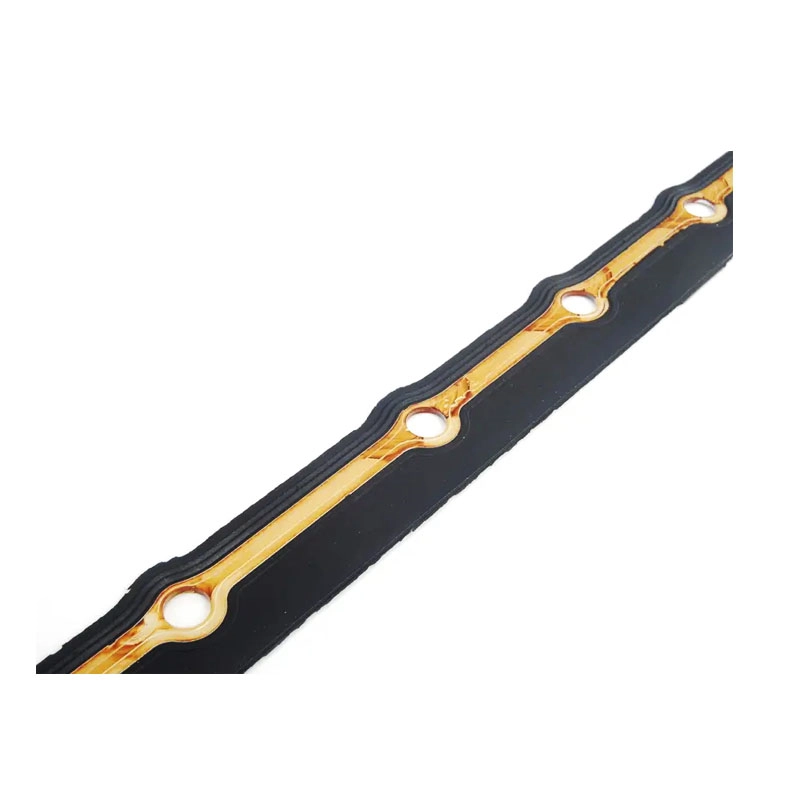Understanding the Rear Main Seal and Its Impact on Transmission Performance
Understanding Rear Main Seal and Its Relation to Transmission
The rear main seal is a crucial component of your vehicle's engine that plays a vital role in its overall performance. While it may not receive the same level of attention as other engine parts, such as the valves or pistons, it serves an important function that impacts various systems within a vehicle, particularly the transmission. In this article, we will delve into what a rear main seal is, its function, signs of failure, and its relationship with the transmission system.
What is a Rear Main Seal?
The rear main seal is a rubber or silicone seal that sits at the rear of the engine's crankshaft. Its primary purpose is to prevent engine oil from leaking out where the crankshaft exits the engine block. The crankshaft is responsible for converting the linear motion of the pistons into rotational motion that ultimately powers the vehicle. The rear main seal effectively keeps engine oil contained, ensuring that lubricants remain within the engine to facilitate smooth operation.
Importance of the Rear Main Seal
The rear main seal is essential for several reasons
1. Lubrication Adequate lubrication is critical for engine performance. The rear main seal prevents oil from leaking, which ensures that engine components are well-lubricated, reducing friction and wear.
2. Preventing Contamination By keeping the oil contained, the rear main seal helps prevent harmful contaminants from entering the engine. This is vital for protecting sensitive engine components and ensuring long-term reliability.
3. Sealing Pressure The seal also plays a role in maintaining the necessary oil pressure within the engine. Adequate oil pressure is critical for the proper functioning of various engine systems, including the transmission.
Signs of a Failing Rear Main Seal
Recognizing the signs of a failing rear main seal is essential for preventing further damage to your engine and transmission
. Some common symptoms includerear main seal transmission

1. Oil Leaks If you notice oil pooling under your vehicle or dripping from the rear of the engine, it could indicate a failing rear main seal.
2. Low Oil Levels Frequent oil changes or having to top off your oil frequently may suggest oil is leaking out due to a compromised seal.
3. Oil Smoke If oil leaks onto hot engine components, it can produce smoke, which is often visible from the rear of the vehicle.
4. Engine Performance Issues In some cases, a failing rear main seal can lead to low oil pressure, causing engine performance issues. You may notice reduced acceleration or unusual engine noises.
Impact on Transmission
The rear main seal's location and function mean that its failure can have direct implications for the transmission. Most vehicles have a flywheel or flexplate connected to the crankshaft, which plays a significant role in the operation of the transmission.
1. Oil Contamination If the rear main seal fails and allows oil to leak, it can potentially contaminate the transmission fluid. This contamination can lead to poor shifting and overall transmission performance.
2. Loss of Hydraulic Pressure In automatic transmissions, insufficient engine oil can decrease hydraulic pressure, affecting the transmission’s ability to engage and disengage gears properly, ultimately leading to transmission slip or failure.
3. Increased Wear and Tear Contaminated fluids can cause additional wear on the transmission components, leading to premature failure and costly repairs if not addressed promptly.
Conclusion
The rear main seal may be a small component, but its importance cannot be overstated. By preventing oil leaks, it ensures that both the engine and transmission function smoothly. Understanding its role can help vehicle owners recognize signs of deterioration early, preventing potential damage to the engine or transmission. Regular maintenance and timely repairs will not only keep your vehicle running efficiently but will also extend its lifespan, giving you peace of mind as you drive. Always consult a qualified mechanic if you suspect issues with the rear main seal or any part of your vehicle’s system to maintain optimal performance.
-
Understanding the Front Main Engine Seal: Purpose, Maintenance, and Installation
News Jul.29,2025
-
Understanding O-Rings and Seal Rings: Types, Applications, and Custom Solutions
News Jul.29,2025
-
Understanding Crankshaft Oil Seals: Rear Seals, Pulley Seals, and Their Role in Engine Integrity
News Jul.29,2025
-
The Importance of Front and Rear Crankshaft Seals in Engine Performance and Oil Management
News Jul.29,2025
-
Crank Oil Seals: Functions, Types, and Cost Considerations in Engine Maintenance
News Jul.29,2025
-
A Comprehensive Guide to O-Rings and Seals: Types, Materials, and Global Applications
News Jul.29,2025
-
Mastering Diesel and Performance Engine Maintenance: A Guide to Critical Oil Gaskets
News Jul.28,2025
Products categories















